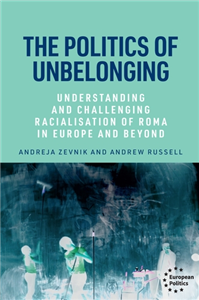Erzählung
Jürgen Becker wurde 1932 in Köln geboren und verbrachte dort seine Kindheit. Während der Kriegs- und Nachkriegsjahre, zwischen 1939 und 1947, lebte er in Erfurt. Nach Aufenthalten in Osterwieck/Harz und Waldbröl kam er 1950 nach Köln zurück. 1953 Abitur. Nach kurzem, abgebrochenem Studium begann er seine Existenz als freier Schriftsteller; seinen Lebensunterhalt bestritt er jahrelang mit wechselnden Tätigkeiten, als Arbeiter und Angestellter, als Werbeassistent und Journalist. Er arbeitete für den WDR und in den Verlagen Rowohlt und Suhrkamp. Zwanzig Jahre lang, bis 1993, leitete er die Hörspielredaktion des Deutschlandfunks. Große Aufmerksamkeit fand Jürgen Becker mit seinem ersten Prosabuch Felder (1964); die beiden folgenden Bücher Ränder (1968) und Umgebungen (1970) festigten seinen Ruf als Verfasser experimenteller Literatur. Zugleich wirkte er mit seinen ersten Hörspielen (Bilder, Häuser, Hausfreunde) am Entstehen des "Neuen Hörspiels" mit. In seinem 1971 veröffentlichten Fotobuch Eine Zeit ohne Wörter verschmolz er seine literarische Arbeit mit dem visuellen Medium. Die künstlerischen Grenzüberschreitungen der Avantgarde hatte er 1965 bereits mit dem Band Happenings dokumentiert, einer Gemeinschaftspublikation mit dem Happening-Künstler Wolf Vostell. In den Siebziger und achtziger Jahren konzentrierte sich Jürgen Becker auf die Lyrik. Die in dieser Zeit entstandenen Gedichtbücher - darunter Das Ende der Landschaftsmalerei (1974), Odenthals Küste (1986), Das Gedicht der wiedervereinigten Landschaft (1988) - plazierte die Kritik in die obersten Ränge der zeitgenössischen Poesie. Gleichzeitig schrieb Jürgen Becker weiterhin Hörspiele und die beiden Prosabücher Erzählen bis Ostende (1980) und Die Türe zum Meer (1983). Dazu korrespondierte er weiterhin mit dem visuellen Medium: Fenster und Stimmen (1982), Frauen mit dem Rücken zum Betrachter (1989), Korrespondenzen mit Landschaft (1996) entstanden nach Collagen seiner Frau, der Malerin Rango Bohne, Geräumtes Gelände (1995) nach Bildern seines Sohnes, des Fotografen Boris Becker. Wende und Wiedervereinigung wirkten entscheidend auf das Schreiben Jürgen Beckers ein. Die Wiederentdeckung der Orte und Landschaften zwischen Elbe und Oder, Rügen und Thüringer Wald motivierten seine Gedichtbände Foxtrott im Erfurter Stadion (1993) und Journal der Wiederholungen (1999), die Erzählung Der fehlende Rest (1997) und vor allem den im Sommer 1999 erschienenen Roman Aus der Geschichte der Trennungen. Mit den Vorbereitungen dazu begann er während eines Stipendiums im Künstlerhaus Schloß Wiepersdorf. Es ist Jürgen Beckers erster Roman; eine bewegende, persönliche Geschichte, die zugleich von den Widersprüchen der deutschen Erfahrungen erzählt. Jürgen Beckers Werk wurde mit zahlreichen Preisen ausgezeichnet, u.a. erhielt er den Preis der Gruppe 47, den Literaturpreis der Bayerischen Akademie der schönen Künste, das Stipendium der Villa Massimo, den Bremer Literaturpreis, den Heinrich-Böll-Preis. Jürgen Becker ist Mitglied der Akademie der Künste in Berlin-Brandenburg, der Deutschen Akademie für Sprache und Dichtung, der Mainzer Akademie der Wissenschaften und der Literatur, sowie des PEN-Clubs. 2001 erhält er für seinen Roman Aus der Geschichte der Trennungen den Uwe-Johnson-Preis, der von der Mecklenburgischen Literaturgesellschaft vergeben wird. 2006 wird er für sein Prosa-Werk, insbesondere den Journalroman Schnee in den Ardennen, mit dem Hermann-Lenz-Preis ausgezeichnet, 2009 erhält er den Schiller-Ring. 2014 wird Jürgen Becker als »maßgebliche Stimme der zeitgenössischen Poesie« mit dem Georg-Büchner-Preis geehrt.



































